What are SharePoint Sites, Pages and Web Parts?
Today I want to talk about fundamentals of SharePoint structure. As I look at all the blog posts I have written in the last several years, I realize that this is should have been one of my first posts. What are SharePoint Sites, Pages and Web Parts – is usually one of the first questions I get by those who are new to SharePoint. So excuse my out of order piece of wisdom here. That said, for those who are struggling to understand how SharePoint is structured, this article will hopefully explain everything and answer your questions. Let’s begin.
What are SharePoint Sites, Pages and Web Parts?
To put everything in simple terms, SharePoint consists of 3 major building blocks:
- Sites – used to organize various types of content (web parts)
- Pages – used to display content (web parts) on a site
- Web Part – used to store particular content/information (i.e. documents, events, contacts). Think of this as smartphone apps.
To put this in perspective, below is an image that depicts the correlation between SharePoint and iPhone®. If you think of the whole phone as SharePoint Site, the phone screen would be your SharePoint Page (and you can create multiple screens on the phone, just like pages in SharePoint) and your phone Apps would be SharePoint web parts. Does it make sense?
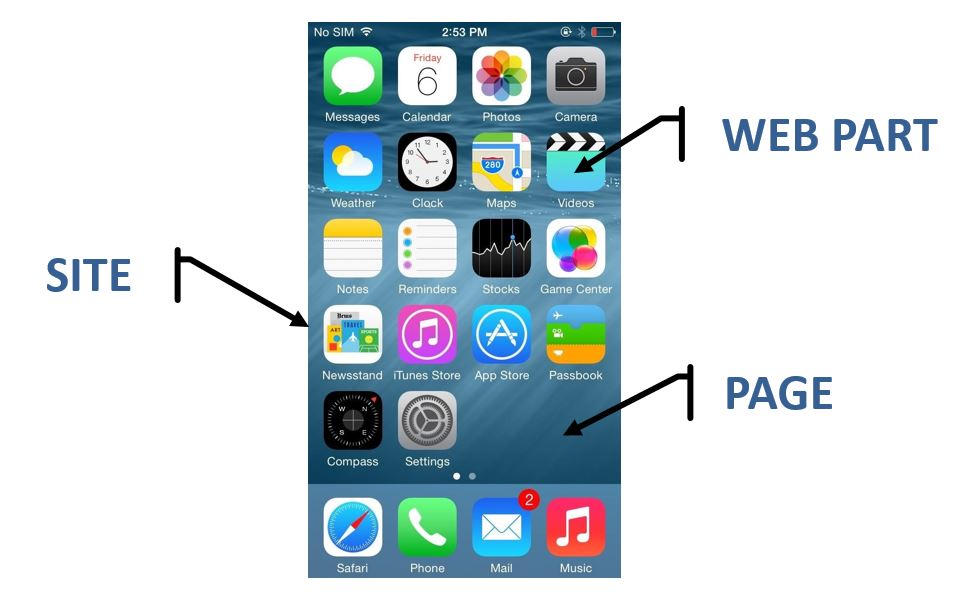
What are SharePoint Sites?
SharePoint sites are essentially containers for information. The way you store and organize things in SharePoint is by Sites. Think of them as separate rooms in a house, with each site/room serving specific purpose or catering to specific audience. Each site in SharePoint might have unique security and content. For example an organization might have 20 sites. 1 site for homepage, 10 sites for departments – one site per department, and 9 sites for projects (1 site per project). Obviously this is just an example, since you can have as many sites as you want, as long you need to have unique security (i.e. new department, new project, etc.).
Example below shows a multi-site intranet example, with homepage + various department and other sites accessible via navigation.
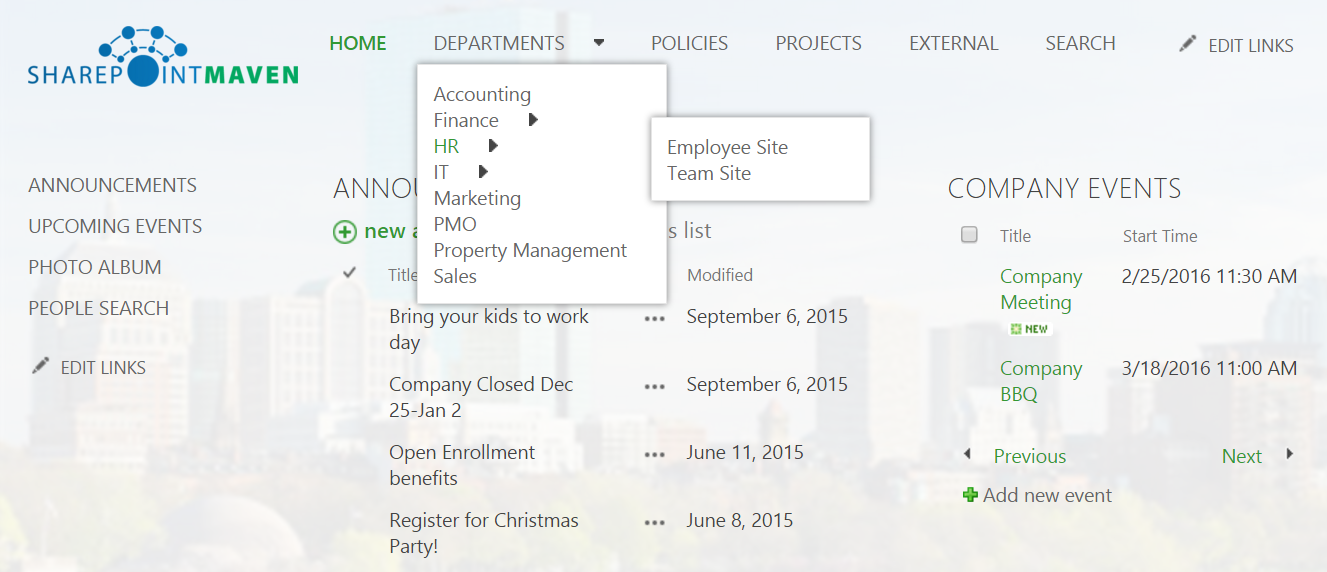
The image below shows typical site hierarchy.
You can create multiple levels of subsites, however, keeping the structure as flat as possible is recommended
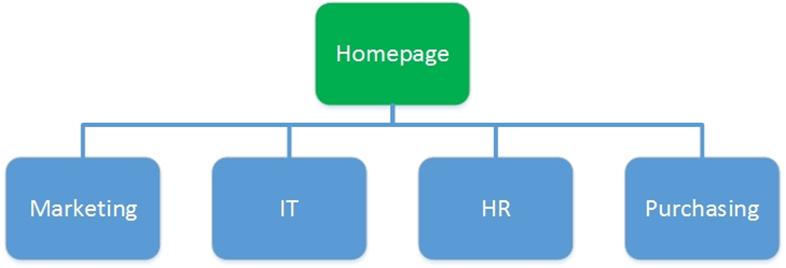
What are SharePoint Pages?
Now that we are clear what SharePoint Sites are, let’s talk about SharePoint Pages. SharePoint pages are nothing more than a means to display content on a given site. It is like when you prepare lots of dishes for your guests and put it all in a table and run out of space – you pull another table and put the dishes there – same thing. So each site might have multiple pages. When you want to display content on a screen and you run out of space, you can create another page. One important thing to remember is that the page is not a method to limit security to content – it is literally just means to display and organize that content on the site and present it to the end user.
Image below shows an example of page being edited. Once in “Edit” mode, you can change layout of the page, order of web parts, etc. And of course, you can add new/additional pages.
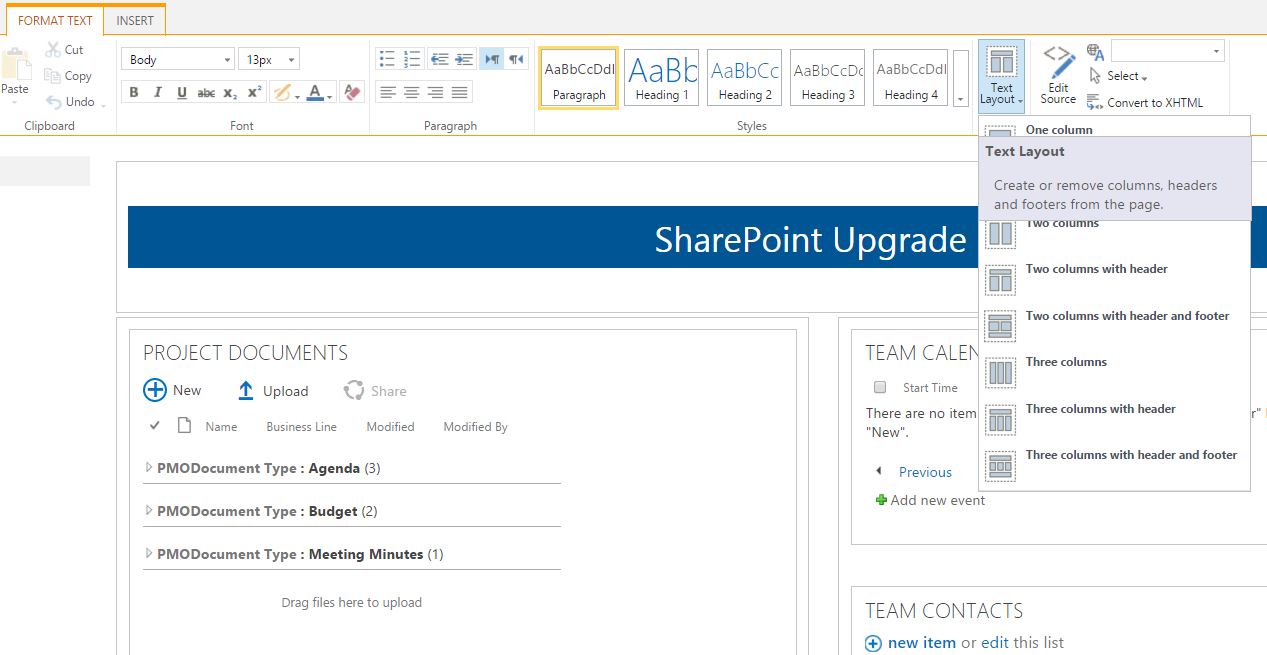
What are SharePoint Web Parts?
So now that we know what sites and pages are, the last building block of SharePoint is called Web Parts. What are SharePoint web parts? Essentially they are mini-applications that allow you to store certain types of content. The analogy here would be your smartphone, like iPhone®. It has may apps available for you to store content. For example, if you want to store contacts, there is an app for that. If you want to track events, there is a calendar app. There is also an app for weather, maps and so on. You get the idea. Same thing with SharePoint. Microsoft has created these built-in apps (web parts) that allow you to store content. For example, you want to store documents – there is an app (web part) for that – it is called Document Library. You want to store events – there is a web part called Calendar. There are other “common” web parts such as Contacts, Tasks, Issues and so on. The out of the box web parts are accessible via Site Contents > Add an App.
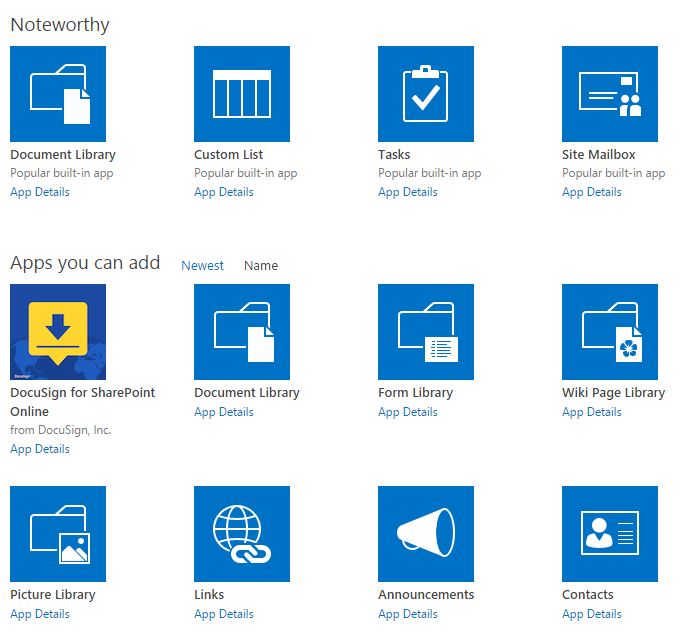
For those on Office 365, there is also a SharePoint Store, where you can buy 3rd party apps (web parts), just like Apple’s App store – same idea.
So that was the concept of SharePoint Sites, SharePoint Pages and SharePoint Web Parts. Another post you might be interested in checking out would be Sites vs. Site Collections. You can access this post here. Enjoy!



